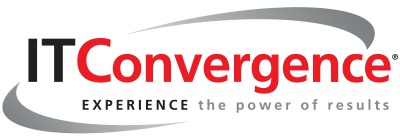Healthcare leaders are navigating uncharted terrain. While the sector has always faced regulatory complexity, a new wave of uncertainty is emerging, one shaped not by medical science or innovation, but by global geopolitics, economics and federal trade policy. Recent U.S. executive orders and tariff shifts are adding layers of unpredictability across healthcare’s already intricate ecosystem, from hospital supply chains to global clinical trials.
In an industry where costs are tightly managed and patient outcomes are on the line, tariffs and trade policy may seem like distant concerns, until they directly affect access to essential equipment, medications, or R&D pipelines. According to Gartner, ongoing changes in federal oversight, agency staffing, and funding allocation are already influencing how providers, payers, and life science companies plan and operate.
This article explores the tangible ways tariffs are impacting healthcare today, breaking down risks by stakeholder type and offering strategic recommendations for adapting to this evolving landscape. Because in today’s healthcare economy, agility in the face of trade disruption is no longer optional. It’s mission-critical.
Why Tariff Volatility Can Hit Healthcare Harder Than Most
When people think of tariffs, they often imagine consumer goods, heavy machinery, or semiconductors. But healthcare, especially in the U.S., is deeply entangled in global trade flows, making it uniquely vulnerable to tariff shocks. From the raw materials used in pharmaceutical manufacturing to the sophisticated equipment in modern hospitals, much of what powers patient care depends on cross-border supply chains.
Unlike other industries, healthcare systems have little room to maneuver when costs spike or materials are delayed. Providers can’t pause surgeries, delay treatments, or stretch resources without impacting patient outcomes. This makes tariff-driven cost increases and supply chain disruptions an economic and a clinical concern.
Here’s why the stakes are so high:
- Global Dependencies Run Deep: The U.S. imports a significant share of its medical devices, diagnostic equipment, and active pharmaceutical ingredients (APIs) from Asia and Europe, regions frequently at the center of trade disputes or policy shifts.
- Cost Sensitivity is Critical: Most healthcare organizations operate within razor-thin margins. When tariff-related price hikes hit essential items, hospitals and insurers struggle to absorb the impact without affecting care delivery or premiums.
- Time is Not Flexible: In healthcare, delays are not just inconvenient, they can be life-threatening. When tariff-related bottlenecks slow the arrival of critical supplies, patient care and safety are directly at risk.
Meanwhile, according to Gartner, policy changes at the federal level are already compounding this complexity. With shifting funding priorities, regulatory changes, and agency leadership transitions, healthcare leaders are now contending with a multi-layered policy landscape that increases operational risk and uncertainty.
In short, healthcare is dealing with tariffs and it’s absorbing the ripple effects across cost, access, compliance, and care quality. And for many, these pressures are converging at a time when transformation is already underway.
Breakdown: Tariffs Impact on Healthcare by Sub-segments
Tariffs don’t strike the healthcare system evenly. Each part of the ecosystem (providers, payers, life sciences, and global health organizations) faces a distinct set of risks, exposure points, and required responses. Here’s how the impact plays out across key stakeholders:
A. Healthcare Providers
Hospitals, clinics, and health systems are on the front lines, and they’re feeling the squeeze.
- Imported medical equipment, including imaging devices, surgical tools, and diagnostic systems, face rising prices due to tariffs on precision components and technology.
- Capital planning becomes more volatile as budget forecasts are derailed by unpredictable supply costs.
- Delivery timelines are stretched when imports are held up by customs reviews or sourcing reconfigurations, jeopardizing elective procedures or delaying equipment upgrades.
B. U.S. Healthcare Payers
For insurers, volatility is the enemy of predictability and tariffs introduce plenty of it.
- Cost shocks in pharmaceuticals or devices force reevaluation of coverage models and premium structures, often mid-cycle.
Payers face difficulty projecting actuarial risk when foreign trade dynamics skew input costs. - Compliance becomes more complex when policies intersect with tariff-driven supply gaps, such as drug formularies or covered benefits.
C. Life Sciences Companies
From biopharma giants to medical device manufacturers, global operations make this sector especially tariff-sensitive.
- Clinical trial delays occur when international sourcing of reagents, APIs, or lab materials is disrupted.
- Regulatory hurdles emerge as timelines stretch and agency priorities shift, particularly when government oversight and funding realign.
- Innovation cycles are lengthened, putting pressure on speed-to-market and competitive positioning.
D. Global and Public Health Organizations
These groups face compounding challenges as they operate across borders and depend on U.S. funding or cooperative trade flows.
- Tariff-driven cost increases can destabilize global aid programs, disrupting vaccine distribution, essential medicine access, and disease eradication efforts.
- Shifts in U.S. policy funding and international trade alignment affect not just budgets, but the viability of entire public health missions.
Each of these segments requires a different response but all must move beyond reactive thinking. The next section will focus on how leaders can build resilience and proactivity into their organizations.
Navigating What’s Next: Recommendations for Leaders
The complexity of healthcare economics in 2025 goes beyond reimbursement models or regulatory changes. It now includes the volatility of global trade. Tariffs are reshaping how organizations source, price, deliver, and innovate. The good news? With the right strategies in place, leaders can not only weather this volatility but transform it into a competitive advantage.
Here’s how to get started:
1. Map Tariff Exposure Across the Value Chain
Most healthcare organizations haven’t conducted a full audit of their trade exposure. Now is the time.
- Identify high-risk SKUs, materials, and services tied to tariff-sensitive countries
- Engage procurement, finance, and clinical operations to flag vulnerabilities
- Prioritize areas where delays or cost spikes could directly impact patient care or revenue
2. Create a Cross-Functional Tariff Response Team
Tariff response can’t live in legal or finance alone. It requires coordination.
- Build a task force including supply chain, compliance, legal, and clinical leadership
- Establish rapid-response protocols for trade disruptions or new executive orders
- Align sourcing decisions with regulatory, operational, and care delivery priorities
3. Leverage Technology for Cost and Compliance Visibility
Digital tools are essential for staying ahead of trade policy shifts.
- Invest in platforms that track and model landed costs in real time
- Automate compliance workflows tied to country of origin, Harmonized Tariff Schedule (HTS) codes, and documentation
- Integrate trade intelligence into your ERP, procurement, and forecasting systems
4. Diversify Suppliers and Build In Redundancy
In healthcare, single-source dependencies can be dangerous.
- Expand supplier networks across multiple regions to reduce tariff concentration risk
- Qualify secondary suppliers now, before they’re needed in an emergency
- Contract for agility: shorter lead times, alternate transport options, flexible volume clauses
5. Advocate and Engage in Policy Discussions
Healthcare’s voice matters in shaping future trade decisions.
- Join industry coalitions, trade groups, and regulatory advisory panels
Provide data-driven feedback to policymakers on how tariffs impact patient outcomes, innovation, and cost control - Stay informed about upcoming executive orders and agency appointments that may impact trade
How Oracle Global Trade Management (GTM) Can Help
Tariffs and trade policy changes go beyond just financial disruptions. They’re operational risks with clinical, regulatory, and strategic consequences for healthcare organizations.
Here’s how ITC supports healthcare providers, payers, and life sciences firms facing rising trade complexity:
Oracle GTM: Visibility, Compliance, and Cost Control at Scale
As an experienced Oracle Global Trade Management (GTM) implementer, we help healthcare organizations:
- Automate trade compliance workflows, including classification, license management, and documentation
- Monitor real-time tariff changes and synchronize them with procurement and logistics decisions
- Model landed costs dynamically, accounting for duties, taxes, freight, and handling fees
- Integrate GTM with Oracle ERP Cloud, JD Edwards and other ERP software providers, enabling a seamless view of trade flows across operations
Why it matters: In highly regulated industries like healthcare, Oracle GTM empowers you to avoid penalties, reduce manual errors, and ensure every shipment aligns with global trade rules—automatically. The combination of GTM and ERP provides enterprises with command and control over their operations and requires collection of documentation in ERP controlled business processes and flags transactions that need evaluation by compliance. GTM protects the enterprise from operational errors, ensures auditability and compliance and has native support for reporting and analytics to drive continuous process improvements that lower the cost of compliance.
Cloud-Powered Infrastructure to Enable Agility
Tariff readiness depends on systems that can pivot quickly. That’s why we design and support:
- Secure, cloud-native ERP and supply chain platforms (Oracle Cloud, JDE, OCI)
- Hybrid architectures that support real-time visibility, scalable analytics, and predictive trade modeling
- Cloud Managed Services that keep systems patched, integrated, and monitored around the clock
From tactical compliance improvements to strategic modernization, ITC helps you build a trade-aware, digitally resilient healthcare enterprise that’s ready for whatever policy or economic disruption comes next.
In Healthcare, Agility Is Life-Critical
As global trade volatility converges with federal policy shifts, the pressure on healthcare leaders is real and growing. But disruption doesn’t have to mean disorder.
By embracing digital trade tools like Oracle GTM, implementing smarter sourcing strategies, and building flexible, cloud-enabled operations, healthcare organizations can turn tariff exposure into an opportunity for resilience and innovation.
Disclaimer:
The information presented in this blog is for educational and informational purposes only. IT Convergence is a technology and ERP systems advisory firm. While we closely monitor the tax, trade, and tariff volatility landscape, we focus on helping organizations prepare their Oracle environments accordingly. We do not provide tax or legal advice, nor do we interpret tax legislation.
We recommend that all organizations consult with qualified tax or legal advisors to assess their specific obligations based on industry, entity classification, and jurisdiction.
IT Convergence supports customers in configuring, optimizing, and future-proofing their systems for compliance but does not assume responsibility for legal or fiscal determinations.



